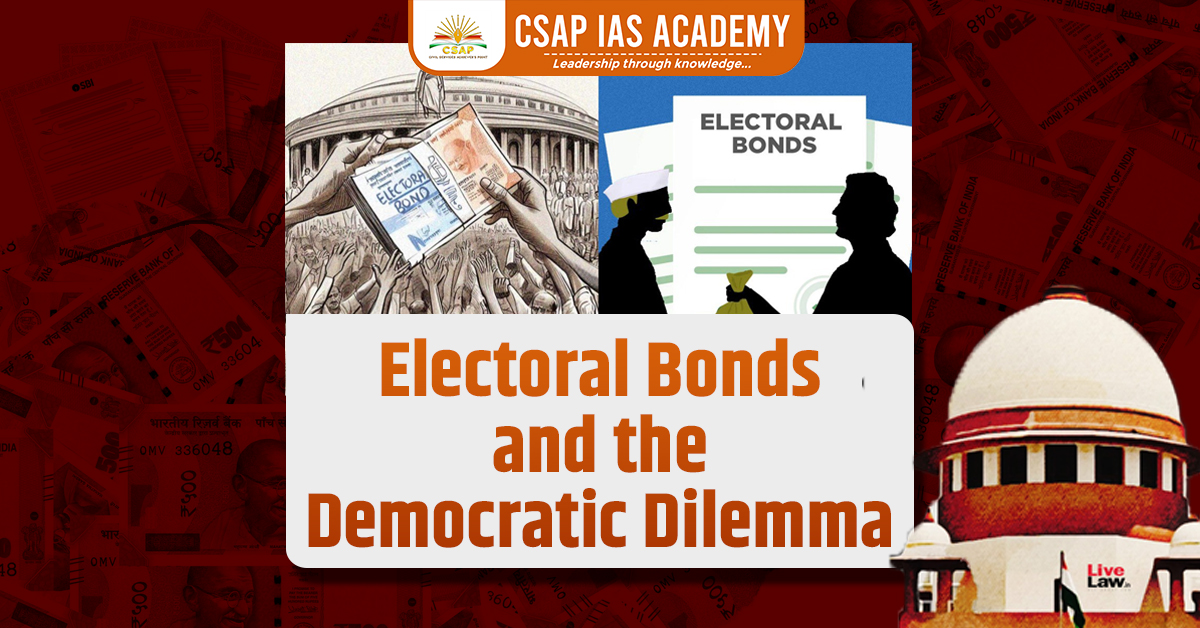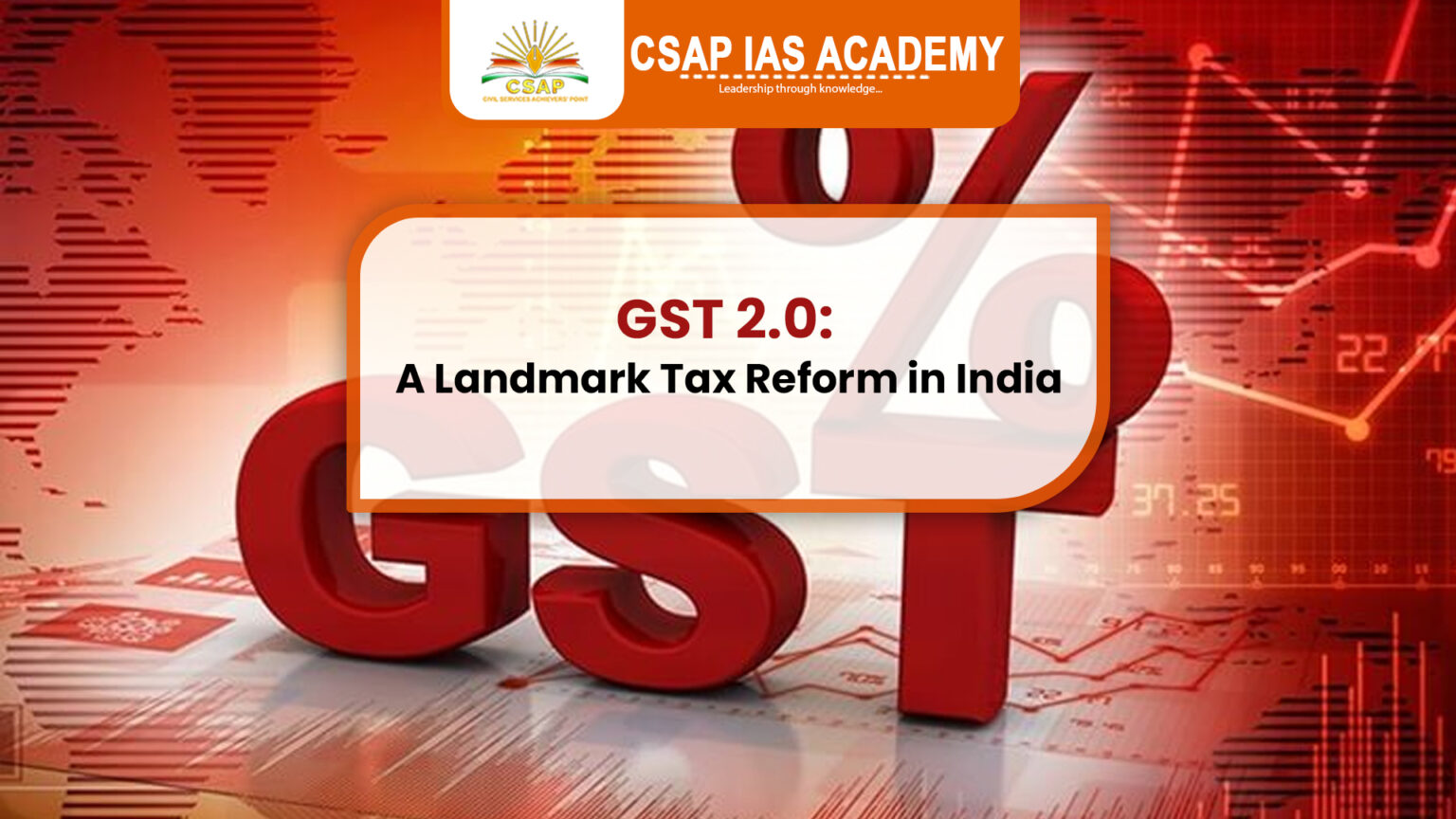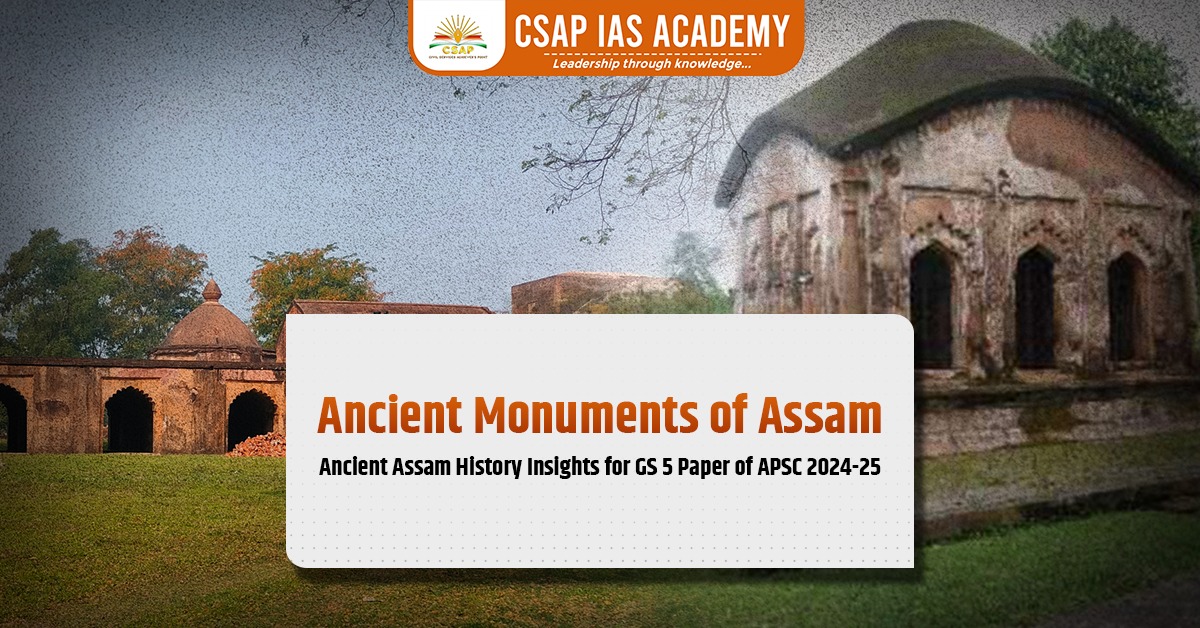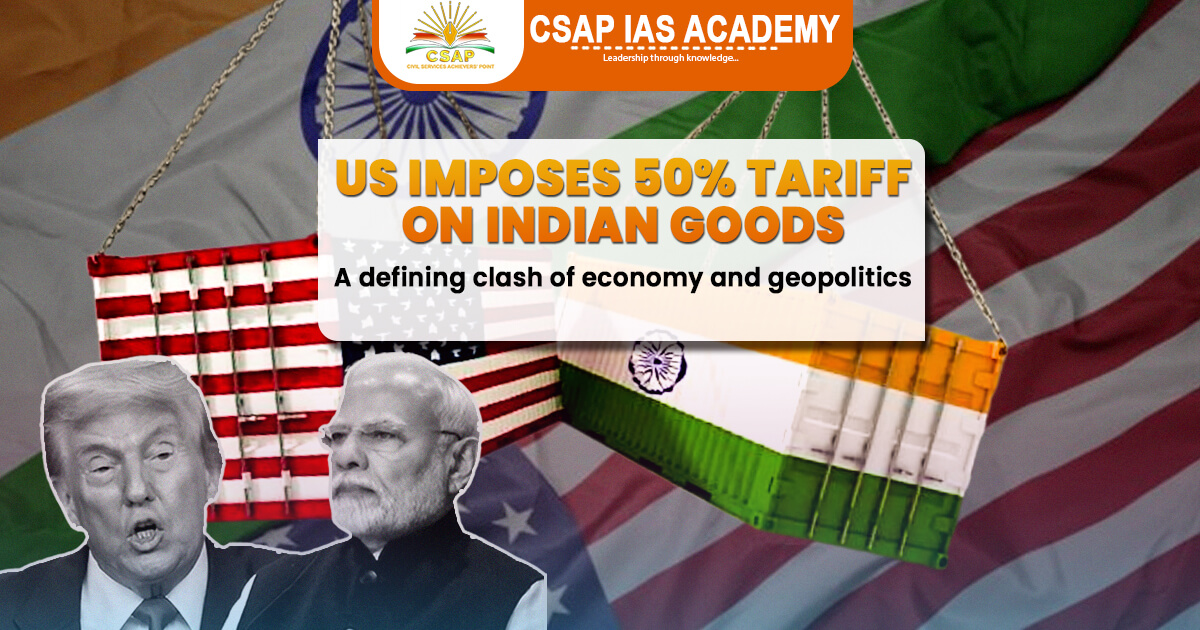In this blog, we explore the Electoral Bonds Scheme—a political funding mechanism introduced in 2017 and recently declared unconstitutional by the Supreme Court. Touted as a step toward transparency, the scheme instead enabled anonymous donations and widened the gap between voters and political power. We’ll break down how it worked, why it was controversial, and what its scrapping means for the future of political accountability in India.
Introduction
In any democracy, how political parties receive funding plays a decisive role in shaping the relationship between the state and its citizens. At its core, political financing reflects the transparency, integrity, and accountability of a democratic setup. In India, however, this domain has long been marked by opacity and asymmetry.
The ideal of clean, transparent funding often finds itself pitted against the reality of unchecked political influence and corporate entanglement. This tension reached a critical inflection point in 2017 with the introduction of the Electoral Bonds Scheme—a move that would come to exemplify the collision between democratic ideals and state-enabled secrecy.
The Electoral Bonds Scheme was introduced in 2017 as part of the Finance Act, passed as a Money Bill, and accompanied by amendments to the Reserve Bank of India Act, the Income Tax Act, and the Representation of the People Act—thereby bypassing scrutiny by the Rajya Sabha. The government presented it as a transformative reform intended to curb the role of black money in elections and usher in a cleaner model of political funding.
In reality, however, the scheme allowed political donations to flow through a financial mechanism that masked donor identities from public view while granting the state special access over transactions. In the process, what was heralded as a step toward transparency became a tool of political asymmetry—deepening the distance between voters and power, while turning transparency into a privilege reserved for the ruling regime, raising grave concerns about democratic accountability.
Anatomy of the Electoral Bonds Scheme
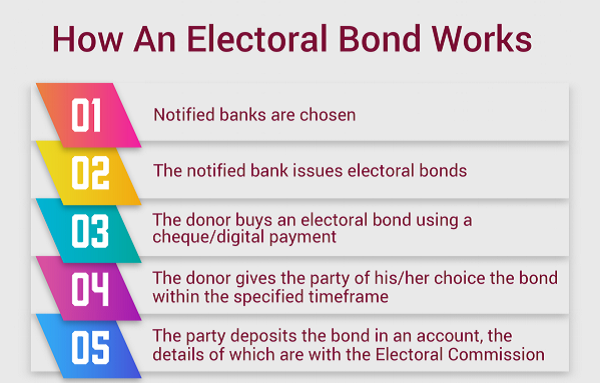
The Electoral Bonds Scheme enabled individuals, corporations, and entities to purchase bonds from the State Bank of India (SBI) and anonymously donate them to registered political parties. The stated objective was to eliminate unaccounted cash transactions in
political funding.
However, this new framework introduced several systemic flaws. Donors remained anonymous to the public, political parties were under no obligation to disclose contributor details, and SBI—acting as the sole authorized intermediary—provided a mechanism where only the government retained access to donor records.
In effect, the scheme created a parallel system where financial flows into politics occurred without public scrutiny but with state visibility, thereby shifting the balance of power further away from citizens.
The Supreme Court Verdict: Unconstitutional and Undemocratic
On February 15, 2024, a five-judge Constitution Bench of the Supreme Court of India unanimously struck down the Electoral Bonds Scheme. Chief Justice D.Y. Chandrachud, delivering the lead opinion, underscored the essential link between informed voting and the right to information. He noted, “The right to information, particularly in the context of political funding, is essential to the electoral process. Voters must have full knowledge about who funds political parties to make informed choices.”
The Court held that the scheme violated Article 19(1)(a), which guarantees freedom of speech and expression—extending to the public’s right to know—and Article 14, the right to equality, on grounds that it created unequal access to critical political information
between political actors and ordinary citizens.
By invalidating the Electoral Bonds Scheme, the Supreme Court reaffirmed the basic structure of the Constitution—emphasizing transparency and informed electoral choice as foundational to free and fair elections
From Voter to Spectator: Democracy in Retreat
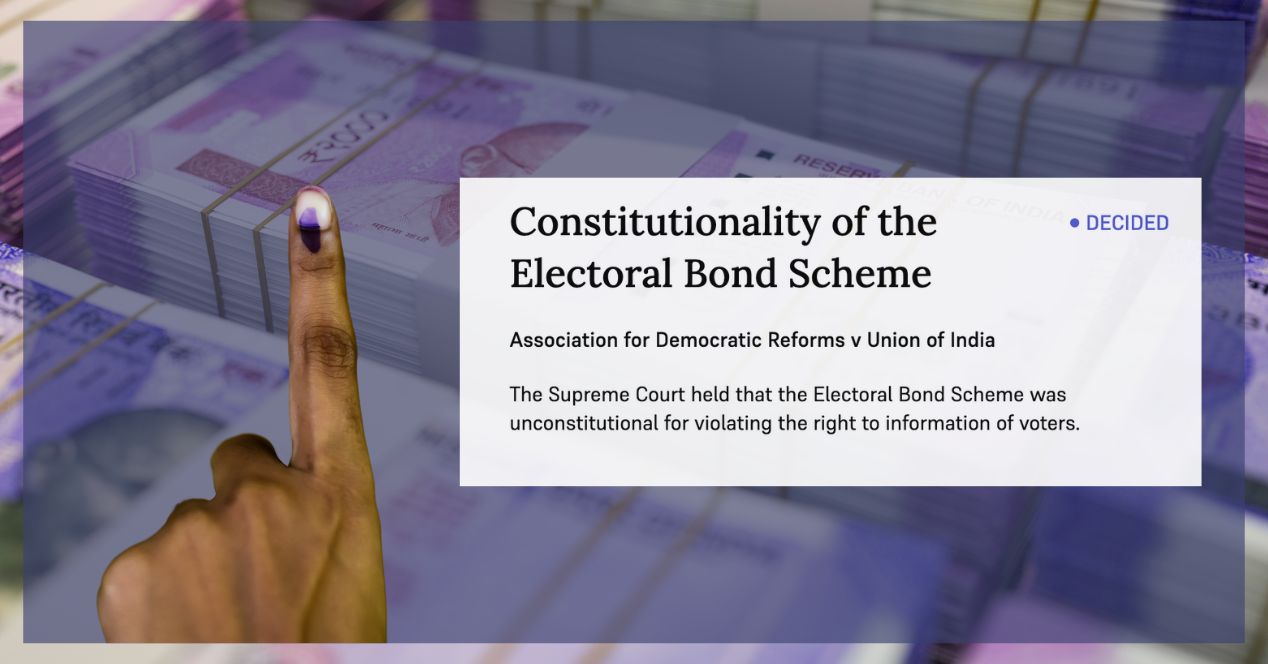
Democracy is not merely exercised at the ballot box—it is an ongoing dialogue between power and public accountability. The Electoral Bonds Scheme, by anonymizing political donors while giving ruling establishments exclusive access to that data, fundamentally distorted this dialogue.
Further, the data released by the Association for Democratic Reforms (ADR) exposes a staggering asymmetry in political financing. This systemic imbalance tilted influence disproportionately toward the ruling party and powerful corporate entities. In the process, the ordinary citizen’s role was reduced to that of a silent spectator.
Electoral Bonds and the Erosion of Accountability
The ramifications of the scheme extended far beyond the electoral sphere. It fostered a culture of corporate cronyism, where companies made hefty donations shortly after receiving public contracts or regulatory approvals. It enabled a climate of state surveillance, with the ruling establishment uniquely positioned to know the identity of donors while ordinary citizens remained in the dark.
Additionally, institutions like the RBI, Election Commission, and Parliamentary mechanisms for accountability were systematically sidelined in both the design and implementation phases—raising concerns about institutional autonomy and complicity.
Ethics, Legitimacy, and the Constitutional Conscience
Beyond legality, the scheme raises a serious ethical question rooted in Immanuel Kant’s categorical imperative: Would we consider it acceptable if all democracies shielded political funding from their citizens? The answer, almost universally, would be no. In a democracy, legality does not always equate to morality.
By institutionalizing secrecy, the state jeopardized the very basis of democratic legitimacy—informed consent of the governed. The scheme, therefore, betrayed not just procedural norms, but the deeper spirit of constitutional morality that demands openness in the exercise of power.
The Way Forward: Toward a Transparent Republic
The path ahead must begin with a collective reaffirmation of transparency as the cornerstone of democratic governance. First, there must be a move toward public funding of elections through a national election fund that is independently audited and accountable.
Second, mandatory disclosure of donors above a reasonable financial threshold should be enforced uniformly across all political parties. Third, an autonomous electoral tribunal or a strengthened Election Commission must be legally empowered to monitor and penalize violations of funding norms.
Additionally, the adoption of digital infrastructure—possibly blockchain-based systems—should be explored to create a secure and publicly accessible audit trail of donations. Finally, institutional integrity must be restored by re-empowering the RBI, Election Commission, and the CAG to resist executive overreach and act independently in the interest of the public.
Conclusion: Reclaiming the Democratic Soul
The Electoral Bonds judgment marks a watershed moment in India’s democratic journey. It is not merely a ruling on political finance, but a clarion call to restore democratic accountability. In a republic that draws its strength from the voice of its people, it is imperative that every citizen has access to information that affects the nature and direction of governance. The verdict offers not closure, but a beginning—a renewed opportunity to reaffirm the founding values of transparency, fairness, and public trust that anchor Indian democracy.
Read: Key Findings of World Bank Report
Download App:

